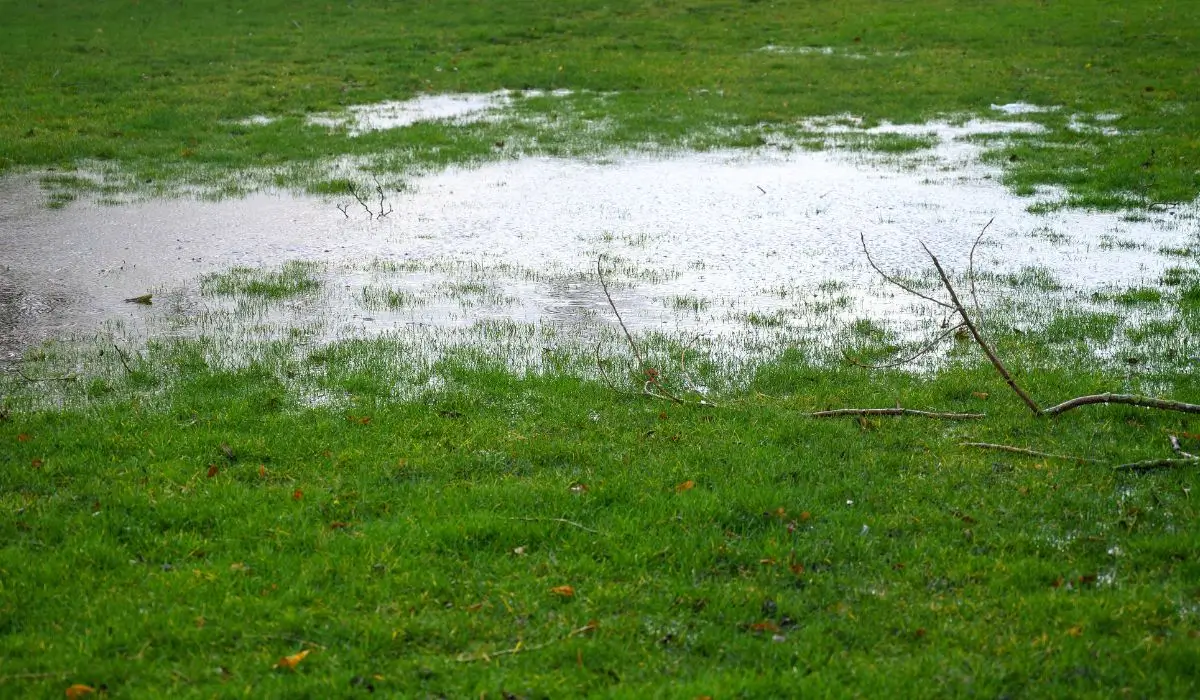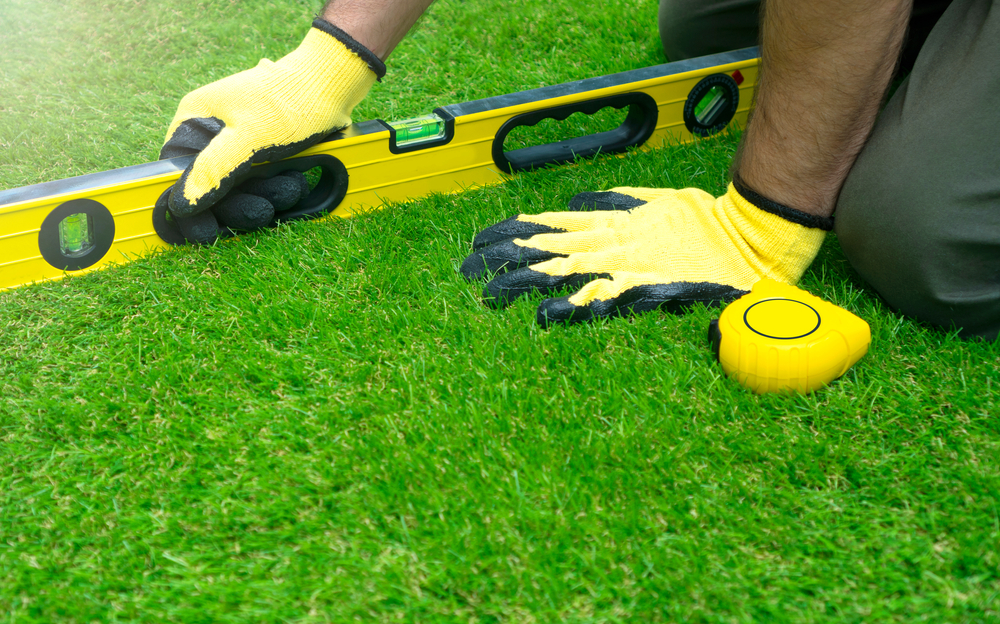
Why Lawn Drainage Problems in Austin Keep Coming Back—And What to Do
The Real Reason Your Lawn Drainage Issues Won’t Go Away? It’s Probably Not What You Think
Water should nourish your lawn—not sit on top of it like a miniature swamp. If you’re constantly dealing with soggy patches, thinning grass, or puddles that linger long after a rainstorm, there’s a good chance the underlying issue is lawn drainage.
All Seasons Austin Landscaping has worked with homeowners across the Austin area who assumed their irrigation systems were to blame, only to find the real issue was something far simpler—and often overlooked: the shape of the lawn itself. Through comprehensive landscaping and lawn care services, we identify and solve drainage problems where they actually start.
A faulty slope or uneven soil grade can throw off the entire balance of your yard. Before replacing your sprinklers or overwatering in frustration, it’s worth taking a closer look at the root of the issue. Let’s break down what’s really going on beneath your grass.
Symptoms of a Lawn Drainage Problem
Some drainage issues creep up slowly, others appear overnight. These early signs should be taken seriously:
- Persistent water pooling after rain or watering
- Soft, sponge-like spots that never seem to dry
- Yellowing or thinning grass in random areas
- Exposed roots or eroded topsoil
- Mold or algae patches near low-lying zones
When a lawn becomes oversaturated, oxygen is pushed out of the soil. This affects the health of the grass and weakens root systems. Over time, it also invites pests and contributes to fungal growth—especially in Austin’s warm, humid climate.
According to the Soil Science Society of America, large areas around Austin are classified as “Houston Black” and “Austin silty clay”—both high in clay content. These soils have slow infiltration rates, which is a major reason lawn drainages persist even with light rainfall.
The Surprising Cause — Improper Grading
Most lawn drainage concerns can be traced to one core problem: your lawn isn’t graded correctly.
Why Water Sits Instead of Draining Away
A yard should have a gentle slope that directs water away from the home and into appropriate channels. If it’s flat or dips toward the foundation, water will collect and stagnate. Over time, this causes soft ground, weed growth, and moisture buildup near your home’s base.
When water isn’t draining properly, it can also affect irrigation performance, causing overwatering in some areas and under-watering in others. This is why many homeowners mistake grading problems for sprinkler malfunctions. To prevent that, our team often recommends pairing grading services with regular irrigation system repair in Austin TX.
Grading is not a cosmetic fix. It’s an essential engineering process that keeps your landscape—and your home—safe and functioning.
Proper grading is especially important when designing a landscape built for long-term functionality. That’s why we emphasize the value of smart planning in projects like these: Importance of Custom Landscape Design in Austin: Every Yard is Unique.
How Lawn Leveling Solves Drainage for Good?
Correcting the slope of your yard is called lawn grading. In lawn grading Austin projects, our crew evaluates soil elevation and redistributes earth to ensure proper water flow.
We also incorporate other solutions, depending on your yard’s needs:
- Topsoil improvement: Using sand and compost blends to break up dense clay
- Sump points or shallow trenches: For areas that need passive water redirection
- Organic lawn aeration: Enhances absorption and reduces runoff—see our lawn aeration service
We approach each project as a unique challenge. There’s no “one-size-fits-all” when it comes to lawn maintenance in Austin—especially when local elevation shifts and soil types vary by block.
Austin Soil + Weather = Lawn Drainage Challenges
In Central Texas, the environment stacks the odds against lawn owners:
- Clay-heavy soil: Water drains slowly and creates sticky conditions
- Flash rainstorms: Overwhelm soil before it can absorb moisture
- Long dry spells: Harden the ground, reducing future infiltration
Managing these extremes takes more than just reactive care—it starts with understanding how to maintain a healthy lawn in tough seasons like drought. See how we approach that here: How to Maintain a Lush Lawn in Austin’s Drought Conditions.
The city averages 34 inches of rain per year, and while that may sound manageable, rapid downpours overwhelm soil capacity. This makes yard drainage issues not only common—but expected—without proper preparation.
Choosing a landscaping contractor in Austin TX who understands local soil science can mean the difference between long-term health and constant repairs.

Before & After: Lawn Leveling Case Example
In 2024, a client in the Barton Hills neighborhood reached out after heavy rain left standing water for three days straight. Initially suspecting a sprinkler problem, they had their system checked—everything was functioning fine. We conducted a full grading analysis and found the backyard sloped backward toward the house.
We corrected the grade by shifting the topsoil, added turf-friendly compost, and installed water-flow divots to direct excess rain toward the street runoff path.
Results: No more standing water. The lawn stayed dry even after a 3-inch thunderstorm, and grass health improved within a few weeks.
Hiring a licensed Austin landscaper with experience in grading saved the homeowner from expensive waterproofing projects down the road.
FAQs About Drainage & Grading
- Can grading be done without replacing the lawn?Yes. Minor grading can often be completed while keeping your existing lawn intact, especially with techniques like top-dressing.
- How steep should the grade be?
A good rule is a 1% slope away from the house—about a 1-foot drop every 100 feet. - Is lawn drainage only a problem for flat yards?
No. Even sloped lawns can have water traps due to low spots, clay buildup, or landscaping features like patios and flower beds. - How does poor drainage affect irrigation?
It leads to inconsistent watering and may strain your system. Irrigation system repair in Austin TX services often reveal grading as the underlying issue. - Can a general contractor fix drainage issues?
It’s best handled by a specialized landscaping company in Austin TX with grading experience. Proper drainage design involves soil science, not just excavation.
Take Control of Your Lawn Drainage Today!
Drainage problems start subtly, but if left unaddressed, they escalate into dead patches, uneven growth, and water damage that affects not just your yard but your home’s foundation. Grading the soil and improving absorption are the most effective long-term solutions. If you’re dealing with pooling water or soggy grass, it’s time to let a licensed Austin landscaper take a closer look.
All Seasons Austin Landscaping offers tailored solutions backed by decades of experience with lawn grading Austin projects. Whether you need full grading, irrigation system repair in Austin TX, or seasonal lawn aeration, our team is ready to help.

 Powered by
Powered by